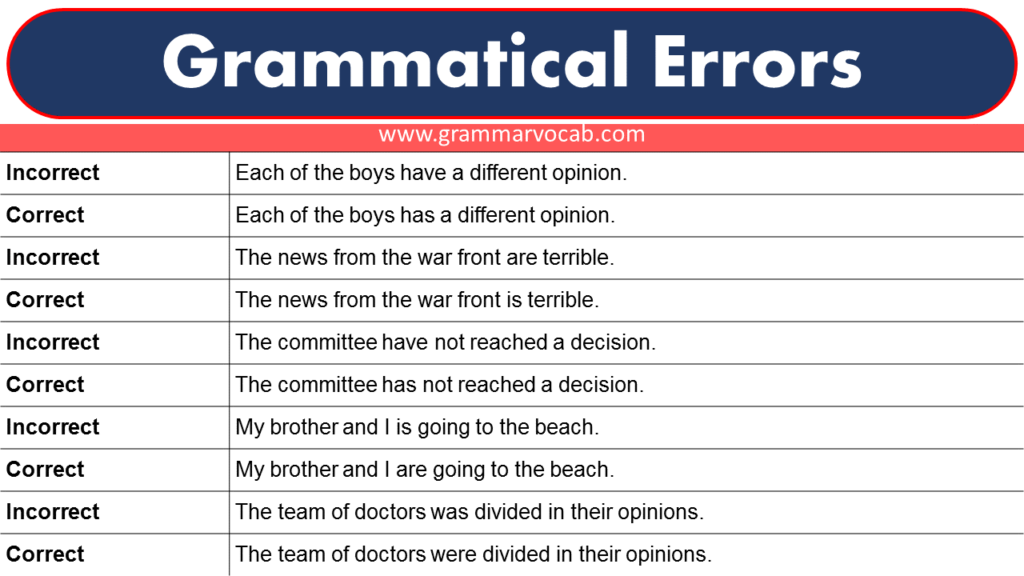Grammar is a crucial aspect of language that can often be tricky to master. Many people make common mistakes in their grammar, leading to confusion and miscommunication. It is important to be aware of these errors and strive to correct them in our everyday communication.
One of the most common mistakes in grammar is the misuse of apostrophes. For example, “its” is used to show possession, while “it’s” is a contraction for “it is” or “it has.” Mixing up these two can lead to confusion in writing.
Sample of Wrong Grammar Sentences
1. She don’t like to eat vegetables.
2. I seen that movie last week.
3. Their going to the park tomorrow.
4. He don’t have enough money to buy a new car.
5. We was at the beach all day.
Another common mistake is the confusion between “your” and “you’re.” “Your” is a possessive pronoun, while “you’re” is a contraction for “you are.” Mixing up these two can lead to misunderstandings in written communication.
Additionally, the misuse of subject-verb agreement is a frequent error in grammar. For example, saying “The team is playing well” is correct, while saying “The team are playing well” is incorrect. Making sure that subjects and verbs agree in number is essential for clear and effective communication.
It is also important to pay attention to the correct use of tenses in grammar. Mixing up past, present, and future tenses can lead to confusion in writing. For example, saying “I have went to the store yesterday” is incorrect, as “have went” should be “have gone” to maintain proper tense consistency.
In conclusion, being aware of common mistakes in grammar is essential for effective communication. By paying attention to the proper use of apostrophes, subject-verb agreement, pronouns, and tenses, we can improve our writing and avoid confusion. It is important to practice and strive for accuracy in grammar to enhance our language skills.
